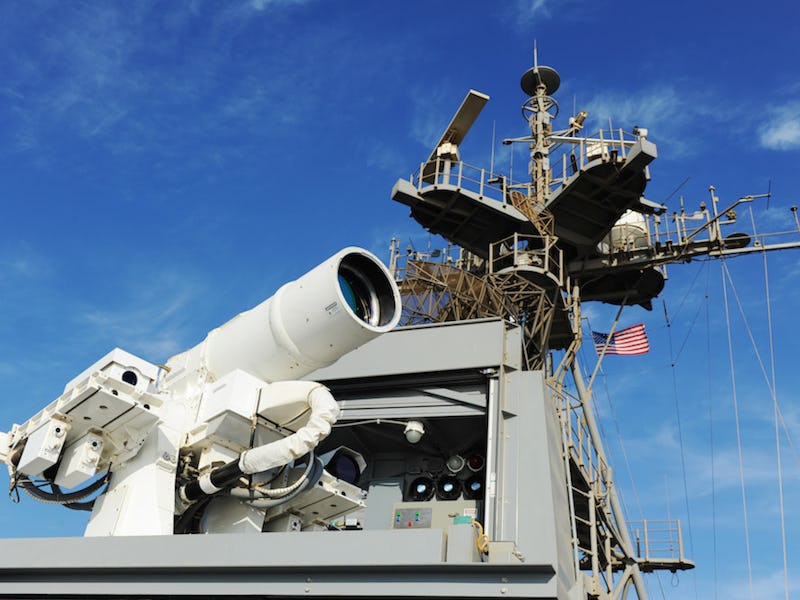Lockheed Martin Is Ready to Deliver Laser Weaponry
The arsenal of the future is ready today.

Laser weaponry is here, and it’s just heating up. The arsenal of the future is now making its way onto the ships, planes, and tanks of today. Lockheed Martin is ready to start providing the U.S. military with laser weapons capable of 30 KW beams as soon as they receive the order, according to three Lockheed executives in an interview with Defense News.
“The technologies now exist,” said Paul Shattuck, company director for Directed Energy Systems. “They can be packaged into a size, weight, power and thermal which can be fit onto relevant tactical platforms, whether it’s a ship, whether it’s a ground vehicle or whether it’s an airborne platform.”
Lockheed Martin’s ATHENA (Advanced Test High Energy Asset) lasers can disable a truck’s engine from over a mile away with only 30 KW of power. It is already in production and capable of up to 120 KW with the right set of modules. Lockheed is also set to deliver its first 60 KW RELY laser to the Army by the end of this year.
“The question is moving from, ‘Do we have the devices?’ to ‘How quickly can we integrate them on the platform?’” said Daniel Miller, Senior Fellow for Air Vehicle Science and Systems with Lockheed’s Skunk Works division.
The Navy’s USS Ponce is already equipped with and authorized to use a Laser Weapon System that can shoot down drones and destroy small landing craft. Its 33 to 105 KW capabilities cost only $1 to fire, highlighting that the military’s next-most advanced weaponry may also slash costs. Today’s missiles can cost hundreds of thousands of dollars to fire.
Laser weaponry still has some major drawbacks, but it’s not clear whether they are simply the result of the technology’s early stages. The Congressional Research Service, though supportive of the new technology, has warned that lasers could pose a risk airplanes or satellites. And they might not work very well in the rain (“Lasers might not work well, or at all, in rain or fog, preventing lasers from being an all-weather solution,” it said in a report issued on March 14.).
But if the weaponry can advance to deal with these obstacles, it offers a range of solutions to some of the most vexing challenges of modern warfare. Most notably, a laser weapon that can bore holes in steel and move at the speed of light would be able to destroy incoming missiles. Far from being science fiction, Lockheed Martin’s Air Defense Anti Munitions (ADAM) has already weathered several tests destroying incoming rockets.
Lockheed Martin is also far from the only company building these weapons. Boeing has developed an anti-drone laser that takes only a few minutes to set up, and the laser aboard the USS Ponce is actually the brainchild of Kratos Defense & Security Solutions. Raytheon and Textron are also developing the technology.
At this point, a laser arms race appears almost inevitable. The advantage of affordable and effective air defense appear too delicious for today’s militaries to resist. And the arms contractors out there are not only willing but actually able to begin delivering laser weaponry, a dream out of Star Wars that is beginning to actually take hold.
Since the debut of The Empire Strikes Back in 1977, we have been trying to match the technology we saw on screen, and we have clearly made major strides. Nonetheless, there is still one field we haven’t quite equalled. Our laser firearms do leave something to be desired.